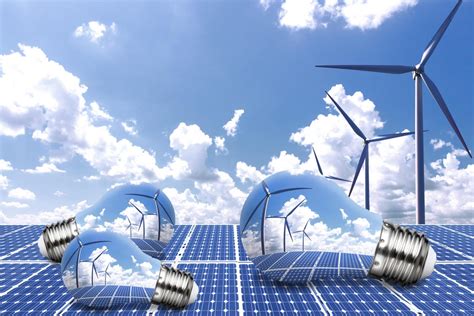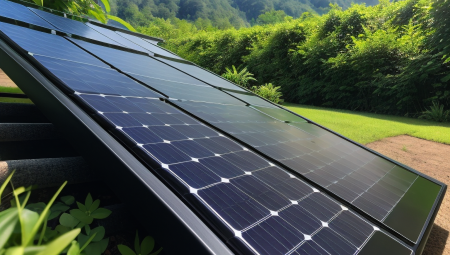As the world grapples with the impact of climate change, the need for sustainable and renewable sources of energy has never been more pressing. Engineers and researchers are constantly exploring new ways to harness the power of nature to meet our energy needs while minimizing harm to the environment. In this blog post, we will delve into the cutting-edge innovations that are shaping the future of renewable energy. From advances in solar power generation and the potential of wind energy to the role of hydroelectric power and the exciting developments in geothermal energy systems, we will explore the diverse engineering solutions that are leading us towards a more sustainable world. Additionally, we will discuss the pivotal role of biomass, energy storage technologies, smart grids, energy-efficient building design, wave and tidal energy solutions, and the rise of electric vehicles in promoting sustainable transportation. Join us as we dive into the fascinating world of engineering solutions for a cleaner, greener, and more sustainable future.
Table of Contents
Advances in Solar Power Generation
The use of solar power has been increasing rapidly as technology advances and costs decrease. With advancements in photovoltaic (PV) technology, solar panels are becoming more efficient in converting sunlight into electricity. This means that a smaller surface area is needed to produce the same amount of power, making solar power more accessible for homes and businesses.
In addition to improvements in PV technology, there have been significant advancements in concentrated solar power (CSP) systems. These systems use mirrors to concentrate sunlight onto a small area, which then heats up a fluid to produce steam, driving a turbine to generate electricity. The development of more efficient CSP systems has made them a viable option for large-scale power plants, especially in areas with abundant sunlight.
Furthermore, innovations in energy storage technologies have made solar power more reliable. Batteries and other storage systems allow excess energy generated during the day to be stored for use during the night or on cloudy days. This addresses one of the biggest challenges of solar power – intermittent generation – and makes it a more dependable source of electricity.
As research and development in the solar power industry continue, we can expect to see even more advancements in the efficiency and cost-effectiveness of solar energy, further driving its widespread adoption as a clean and sustainable energy source.
Harnessing the Potential of Wind Energy
Wind energy, a form of renewable energy, has been gaining increasing attention as a sustainable power source. Harnessing the power of wind involves using wind turbines to convert the kinetic energy of the wind into electrical energy. As technology in this field continues to advance, the efficiency and cost-effectiveness of wind energy have improved, making it a viable alternative to traditional energy sources.
One of the key advantages of wind energy is its clean and environmentally friendly nature. Unlike fossil fuels, wind energy does not produce harmful emissions or contribute to air pollution
The Role of Hydroelectric Power in Renewable Energy
Hydroelectric power plays a crucial role in the field of renewable energy, providing a clean and reliable source of electricity. The process begins with the flow of water through a dam, which turns the blades of a turbine to generate electricity. This sustainable energy source has significant advantages, as it produces minimal greenhouse gas emissions and can be operated continuously to meet the demand for electricity.
In addition to being a reliable source of renewable energy, hydroelectric power also offers a range of environmental benefits. The reservoirs created by dams for hydroelectric power generation can serve as recreational areas and aid in flood control. Furthermore, the generation of hydroelectric power does not release harmful pollutants into the air, making it a clean energy solution.
Hydroelectric power also has the potential to support the integration of other renewable energy sources into the grid. Its reliable nature can help stabilize the variability of wind and solar power, making it a valuable component of the overall energy mix. By working in tandem with other renewables, hydroelectric power contributes to a more balanced and sustainable energy system.
As the demand for renewable energy continues to grow, the role of hydroelectric power in the energy landscape is likely to expand. Its ability to provide a consistent and clean source of electricity makes it a key player in the transition to a more sustainable and environmentally-friendly energy future.
Innovations in Geothermal Energy Systems
Geothermal energy is a renewable energy source that harnesses the natural heat of the Earth’s core to generate power. This innovative system has seen significant advancements in recent years, making it an increasingly viable and sustainable option for meeting the world’s energy needs.
One of the key innovations in geothermal energy systems is the development of Enhanced Geothermal Systems (EGS). EGS technology involves injecting water into hot rock formations deep underground to create artificial reservoirs of steam that can be used to drive electricity-generating turbines. This process has the potential to greatly expand the geographic range of geothermal energy production, as it can be implemented in areas that do not have naturally occurring geothermal reservoirs.
Another innovation in geothermal energy systems is the use of advanced drilling techniques to access previously untapped resources. By drilling deeper and more efficiently, engineers are able to access hotter temperatures and higher energy output, making geothermal power more cost-effective and productive.
Furthermore, the integration of geothermal energy with other renewable energy sources, such as solar and wind, has emerged as a cutting-edge innovation in the industry. By combining multiple sources of clean energy, geothermal power can provide a more consistent and reliable supply of electricity, ultimately making it more attractive for widespread adoption.
Tapping into the Power of Biomass
Biomass energy is a renewable source of power that has been gaining attention as a sustainable alternative to fossil fuels. This form of energy is derived from organic materials such as wood, agricultural crops, and waste. Biomass energy can be harnessed through various processes, including combustion, gasification, and anaerobic digestion.
One of the main advantages of biomass energy is its potential to reduce greenhouse gas emissions. When organic waste is used as a fuel source, it prevents it from releasing methane into the atmosphere as it decomposes. Additionally, the carbon dioxide released during the combustion of biomass is offset by the carbon dioxide absorbed by the plants during their growth, making it a carbon-neutral energy source.
Furthermore, biomass energy provides opportunities for waste management and agricultural diversification. It allows for the conversion of agricultural residues, forestry waste, and organic by-products into valuable energy resources. This not only reduces the amount of waste in landfills, but also creates a new revenue stream for farmers and businesses.
In conclusion, tapping into the power of biomass offers a sustainable solution to our energy needs. As we continue to explore and invest in biomass energy technologies, we can move towards a more environmentally friendly and economically viable energy system.
Revolutionizing Energy Storage Technologies
In recent years, there have been significant advances in energy storage technologies that are revolutionizing the way we store and utilize energy. These innovations are crucial for integrating renewable energy sources into our power grids and reducing our reliance on fossil fuels.
One of the most exciting developments in energy storage is the rapid growth of lithium-ion batteries. These batteries are widely used in electronic devices and are increasingly being used to store energy from solar panels and wind turbines. The improvement in energy density and reduction in costs have made them a popular choice for energy storage systems.
Another promising technology is flow batteries, which store energy in liquid electrolytes. These batteries can provide long-duration storage, making them ideal for balancing the intermittent nature of renewable energy sources. They are being increasingly used in large-scale energy storage applications.
Furthermore, the development of compressed air energy storage (CAES) and flywheel energy storage systems are also contributing to the revolution in energy storage technologies. CAES systems store energy by compressing air and utilizing it to generate electricity when needed, while flywheel systems store energy by increasing the rotational speed of a rotor.
Integrating Smart Grids for Efficient Energy Management
Smart grids are becoming an increasingly important component of modern energy management systems. These grids utilize digital communication technology to detect and react to changes in electricity supply and demand, allowing for more efficient distribution and use of energy.
One of the key benefits of smart grids lies in their ability to integrate renewable energy sources, such as solar and wind power, into the existing power grid. This integration is essential for reducing our reliance on fossil fuels and minimizing our carbon footprint. By efficiently managing the flow of electricity from these renewable sources, smart grids can help ensure a steady and reliable supply of energy, even when weather conditions are variable.
Furthermore, smart grids enable consumers to actively participate in energy management by providing real-time information on electricity usage and pricing. This empowers individuals and businesses to make informed decisions about when and how they use energy, ultimately leading to greater energy efficiency and cost savings.
Overall, the integration of smart grids into our energy management infrastructure represents a significant step towards a more sustainable and resilient energy future. By leveraging advanced technology and empowering consumers, smart grids hold the potential to revolutionize the way we generate, distribute, and consume energy.
Enhancing Energy Efficiency through Building Design
When it comes to enhancing energy efficiency through building design, there are a variety of innovative strategies and technologies that are currently being implemented in the construction industry. These initiatives are aimed at reducing the environmental impact of buildings while also lowering operational costs for building owners and occupants.
One of the key ways to achieve energy efficiency in building design is through the use of advanced insulation materials and techniques. By properly insulating a building, it is possible to minimize heat transfer and reduce the need for excessive heating and cooling, thereby cutting down on energy consumption and greenhouse gas emissions.
Furthermore, incorporating energy-efficient windows and doors can also make a significant difference in a building’s overall energy performance. Windows and doors that are designed to minimize heat loss and air infiltration can help to maintain a comfortable indoor environment while minimizing the use of heating and cooling systems.
Another important aspect of enhancing energy efficiency through building design is the integration of smart HVAC (heating, ventilation, and air conditioning) systems. By utilizing advanced controls and sensors, these systems can optimize energy usage based on occupancy, outdoor weather conditions, and other factors, resulting in significant energy savings.
Exploring Wave and Tidal Energy Solutions
Wave and tidal energy are renewable sources of energy that have been gaining attention in recent years as the world seeks to reduce its reliance on fossil fuels. These forms of energy capture the natural movement of the ocean to generate electricity, offering a sustainable alternative to traditional power sources.
One of the advantages of wave and tidal energy is that they are predictable and reliable, as the movement of the ocean is constant and can be accurately forecasted. This makes them a viable option for providing a consistent source of power, unlike other renewable sources such as solar and wind, which are dependent on weather conditions.
Another benefit of wave and tidal energy solutions is their low environmental impact. Unlike fossil fuel-based power plants, wave and tidal energy facilities produce zero greenhouse gas emissions, helping to mitigate climate change and reduce air pollution.
Furthermore, the potential for wave and tidal energy is vast, with an estimated global resource that exceeds the current electricity demand. This means that these technologies have the capacity to meet a significant portion of the world’s energy needs, making them key players in the transition to a more sustainable energy system.
Promoting Sustainable Transportation with Electric Vehicles
Electric vehicles (EVs) are playing a crucial role in promoting sustainable transportation and combatting climate change. The transition to electric vehicles is a key step in reducing greenhouse gas emissions and decreasing our dependence on fossil fuels.
One of the main benefits of electric vehicles is their environmental impact. Unlike traditional gasoline-powered cars, EVs produce zero tailpipe emissions, leading to cleaner air and a healthier environment for all. This is especially important in urban areas, where air pollution from vehicles contributes to various health issues.
Another advantage of electric vehicles is their contribution to energy security. By using electricity as a fuel source, we can reduce our reliance on imported oil and decrease the impact of volatile gasoline prices. This can lead to greater energy independence and stability, benefiting both individuals and the economy as a whole.
Furthermore, the technology behind electric vehicles is constantly advancing, leading to improvements in battery life, charging infrastructure, and overall performance. As a result, the range of EVs is increasing, making them a more viable and practical option for everyday transportation needs. Innovations in wireless charging and fast-charging technology are also making it easier and more convenient for drivers to power up their electric vehicles on the go.





